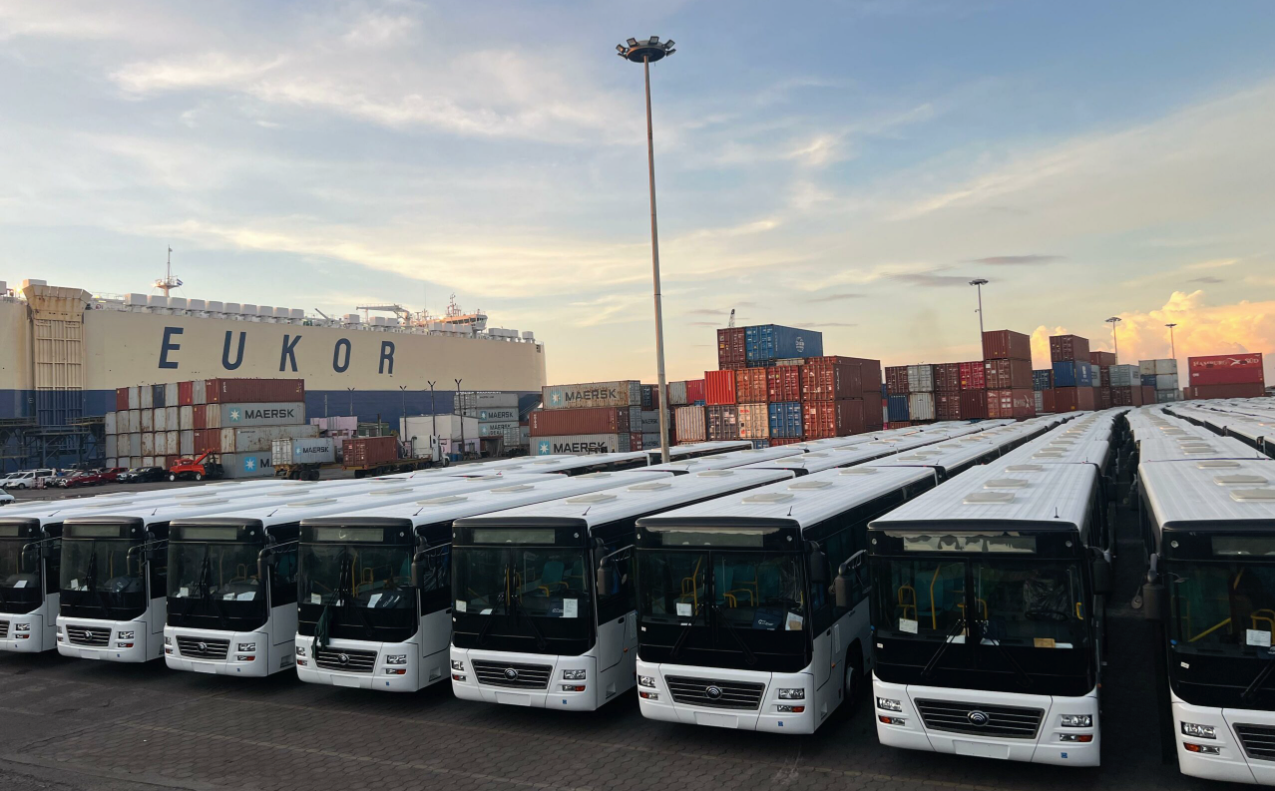Recently, images circulated on social media showing a long caravan of dozens of brand-new white buses traveling along a Nicaraguan highway. The news behind this unusual procession was the arrival of 250 buses manufactured by the Chinese company Yutong for Nicaragua’s urban transport system. These images vividly represent three realities in today’s Latin America, where significant urban mobility challenges, governments’ efforts to reduce greenhouse gas emissions, and China’s collaboration with various countries in the region intersect to address both issues.
According to World Bank data, 82% of Latin America and the Caribbean’s population lives in urban areas, and projections indicate this proportion will reach 86% by 2050. Mega-cities like Buenos Aires, Mexico City, Lima, or São Paulo concentrate millions of people within their metropolitan areas—specifically, the ten largest account for 25% of the region’s total urban population. Given these numbers, urban mobility has become one of the biggest challenges facing Latin American cities.
According to the Urban Mobility Readiness Index, only four Latin American cities rank among the world’s top 50 for best urban transportation. Santiago de Chile, Buenos Aires, São Paulo, and Mexico City ranked 43rd, 44th, 46th, and 50th, respectively, in this international ranking. Cities like Rio de Janeiro, Bogotá, Montevideo, or Quito followed, but all were far behind the top-ranked cities, dominated by European, North American, and Asian urban centers.
Nevertheless, the 2023 edition of the index highlighted how Latin American cities are diligently working to improve their urban transport networks, strongly focusing on collective electric mobility, whether through electrifying and modernizing bus fleets or building and expanding metro or urban railway networks.
This commitment to collective electric mobility is closely linked to the fact that, according to UNDP data, road traffic accounts for nearly 39% of greenhouse gas emissions in Latin America and the Caribbean, causing serious externalities for an overwhelmingly urban population. Additionally, almost all countries in the region have signed commitments to reduce their emissions over the coming decades, with public transportation playing a significant role in driving this change.
The most ambitious goals are set in Chile and Colombia, where plans aim to convert 100% of buses to electric by 2035. Argentina and Costa Rica have proposed similar targets, but with a longer timeline extending to 2050. Other countries in the region, such as Ecuador, Honduras, and Mexico, have also envisioned a gradual shift toward electric mobility in their bus fleets, though with less ambitious objectives.
This focus on electrifying urban mobility has positioned countries like Chile (21.4%), Uruguay (18.7%), Colombia (11.4%), and Argentina (9.9%) with electric bus fleets that far exceed those of technologically advanced countries like Germany or the United States, where electric bus penetration is just 4.5% and 0.5%, respectively.
However, these figures pale compared to China, which holds 76.4% of the world’s electric buses, with 64% of its national fleet electrified. These numbers wouldn’t be possible without China’s electric bus manufacturing industry, currently the largest in the world. Manufacturers such as BYD, Yutong, Higer, and Farizon have gone from being relatively unknown to becoming major suppliers of both electric and combustion buses in cities like Santiago de Chile, San José, Guayaquil, and Mexico City.
Chinese companies are thus key players in modernizing and improving urban mobility across many Latin American cities. This involvement extends beyond buses, as they are also engaged in other projects, such as renewing the metro train fleet in Buenos Aires and constructing new metro lines in Bogotá, Monterrey, and Santiago de Chile. These projects are not only part of Chinese companies’ international expansion but also align with the concept of “new infrastructure.”
This term, coined in China in 2018, refers to infrastructure projects aimed at modernizing China and the countries participating in the Belt and Road Initiative in a “small but smart” way. Both electric mobility and urban rail infrastructure are priority sectors under this philosophy.
This “new infrastructure” in Latin America has attracted Chinese companies for large projects like the Line 7 of the Santiago de Chile metro (China Railway 16th Bureau Group), the Line 1 of the Bogotá metro (CHEC), and the expansion of Monterrey’s suburban lines 4 and 6 (CRCC). This involvement could also foster competition with companies from Europe, the United States, Canada, or Japan, potentially offering more efficient, eco-friendly, and competitive solutions to the region’s urban mobility challenges.
*This article was originally published on the REDCAEM website.













